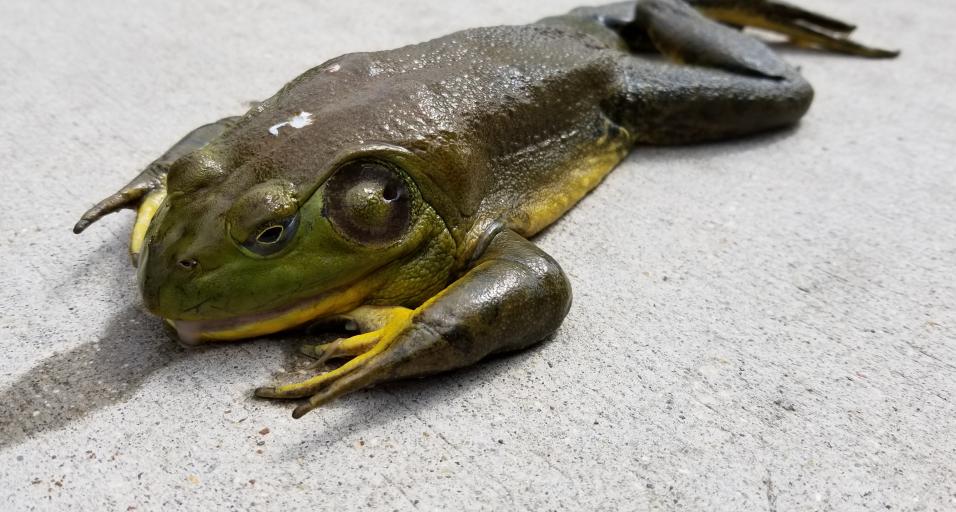In summer 2018, an American bullfrog was confirmed at Kleenburn Ponds north of Sheridan. Bullfrogs are not native to this part of Wyoming and their discovery in the Sheridan area is cause for concern. Bullfrogs are large, aggressive predators that compete with and even eat native amphibians. When they are intentionally or accidentally introduced into new areas, they can become invasive and have lasting negative impacts on local ecosystems.
In order to determine if the bullfrog at Kleenburn Ponds was an anomaly or an indication of a more widely distributed population, a department herpetologist conducted surveys in the Sheridan area in summer 2019. He found large numbers of bullfrogs at Mavrakis Pond and several sites along Big Goose Creek outside of Sheridan.
A formal survey will not occur this summer, but with hundreds of private ponds, several large reservoirs and many miles of streams in our corner of the state, Game and Fish is asking the public to look and listen for bullfrogs while spending time outdoors this summer.
“Our goal this summer is to continue documenting and mapping where bullfrog populations are located,” said Sheridan Region Aquatic Invasive Specialist Reed Moore. “Reports from the public are a big help in this endeavor and in fact, it was a member of the public who heard and reported the first bullfrog at Kleenburn Ponds.”
Bullfrogs can be identified by their green or gray-brown color and distinctive circular eardrums, or tympanum, behind each eye. They are very large in size, as are their tadpoles. Any tadpole whose body, not including tail, is the size of a half dollar or bigger is likely a bullfrog.
The easiest way to document the presence of a bullfrog is to listen for it. Bullfrogs have a deep, distinct call and begin mating and calling later in the summer than our native amphibians such as boreal, leopard and wood frogs. They will be particularly vocal in July and August. There are many video and audio clips available online to familiarize yourself with a bullfrog’s unique sound.
Rather than killing or capturing bullfrogs or tadpoles if found, Moore is asking that the public document the locations with GPS points or be able to provide a detailed location and report the information to the Sheridan Region office at 307-672-7418. Moore or other AIS personnel will follow up and investigate reports.



